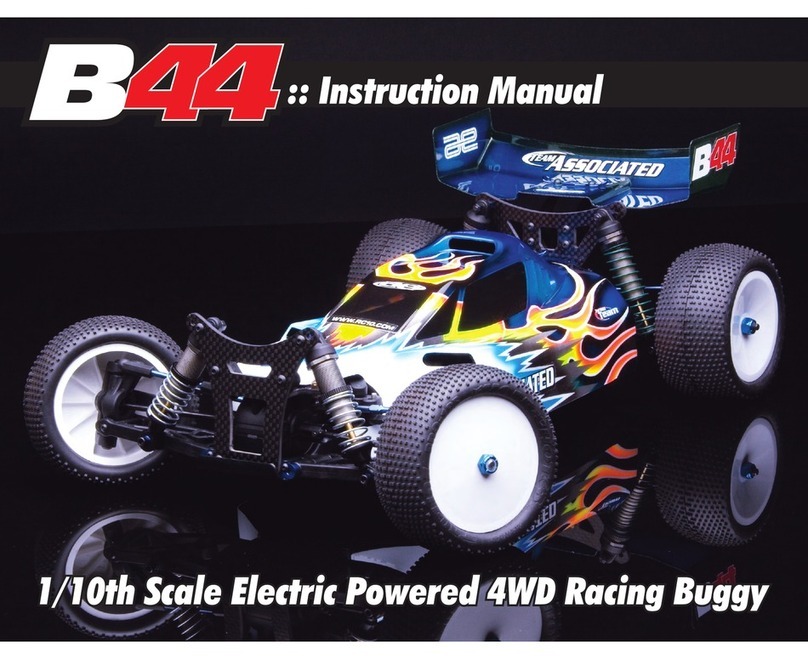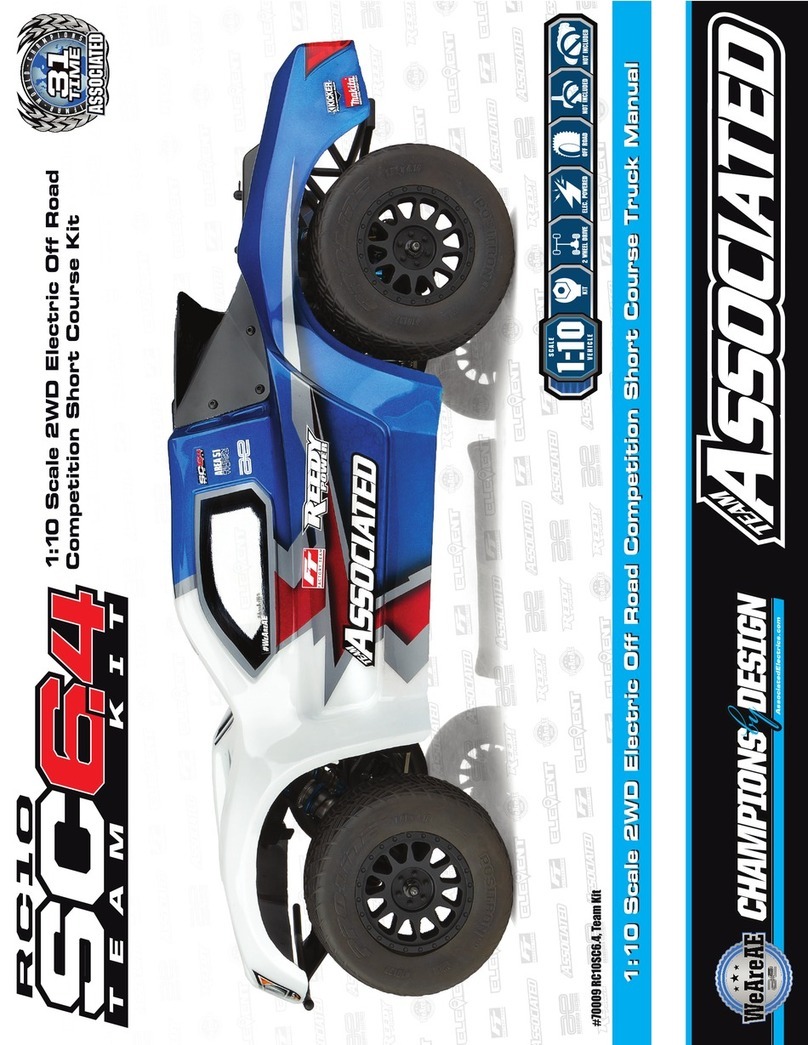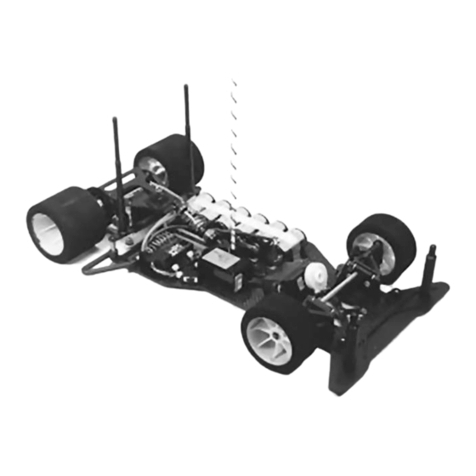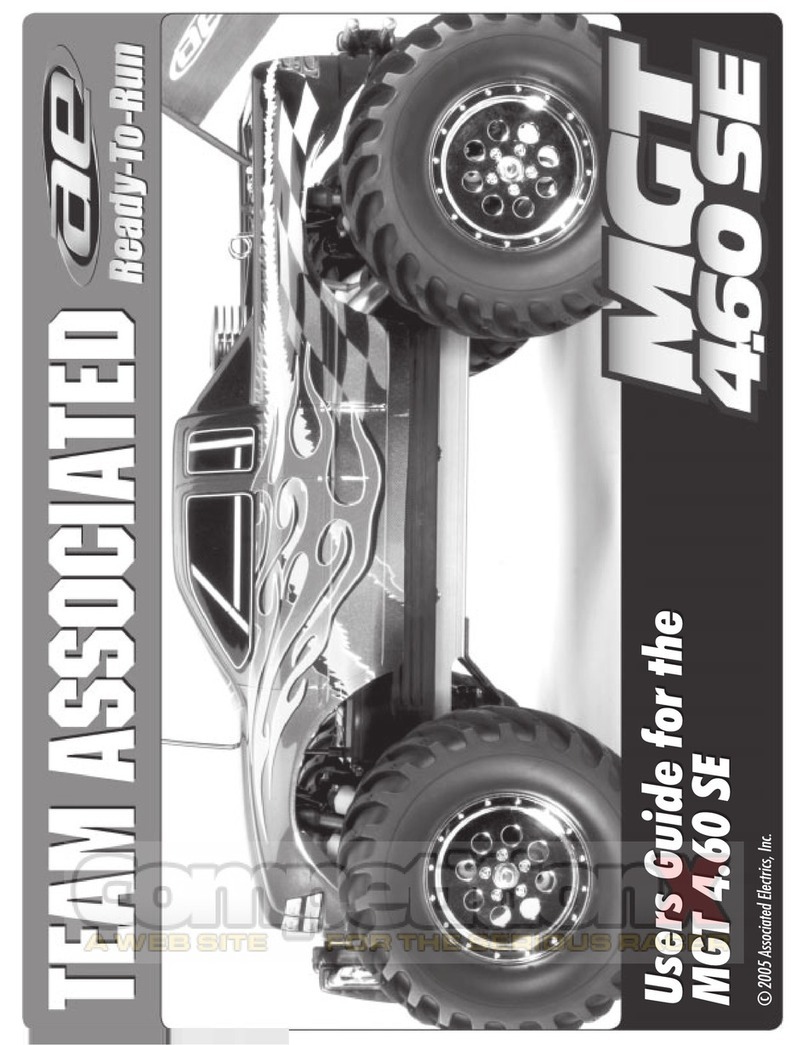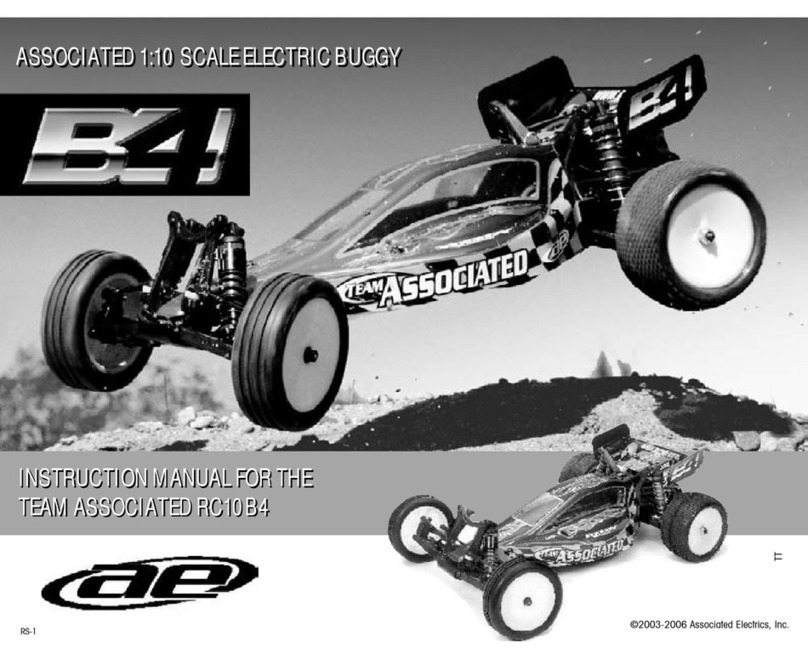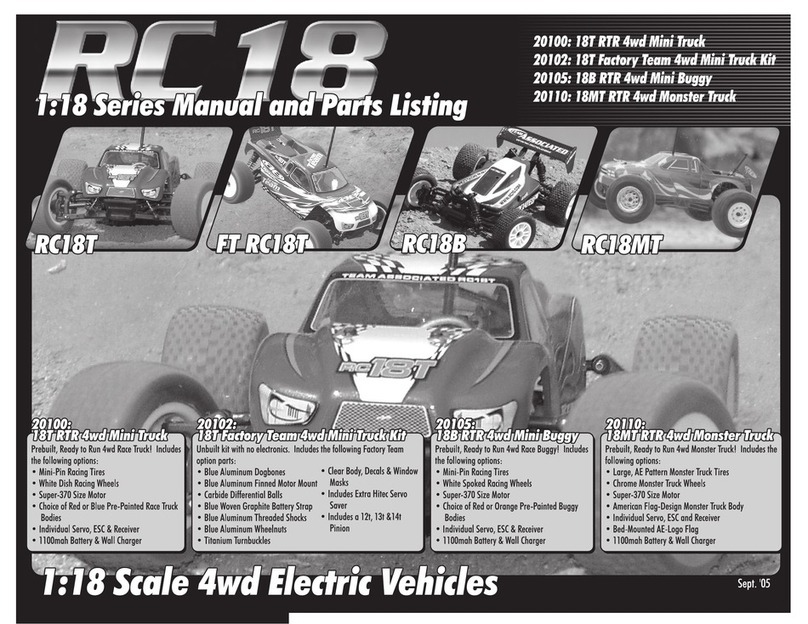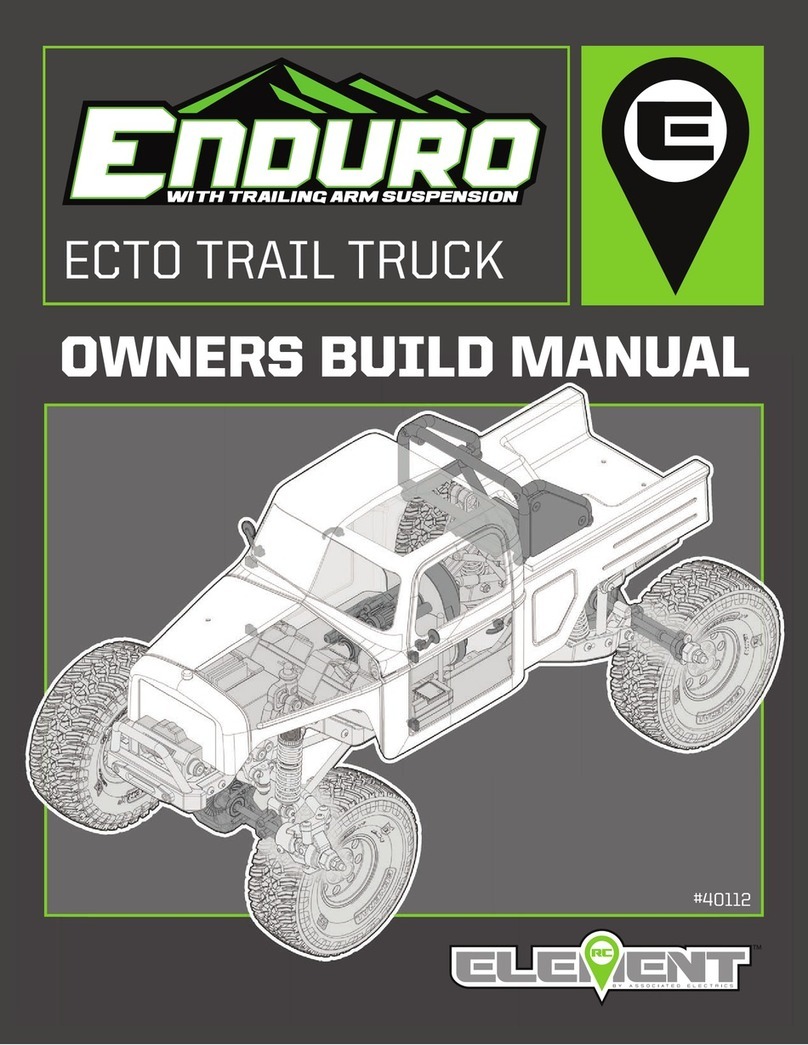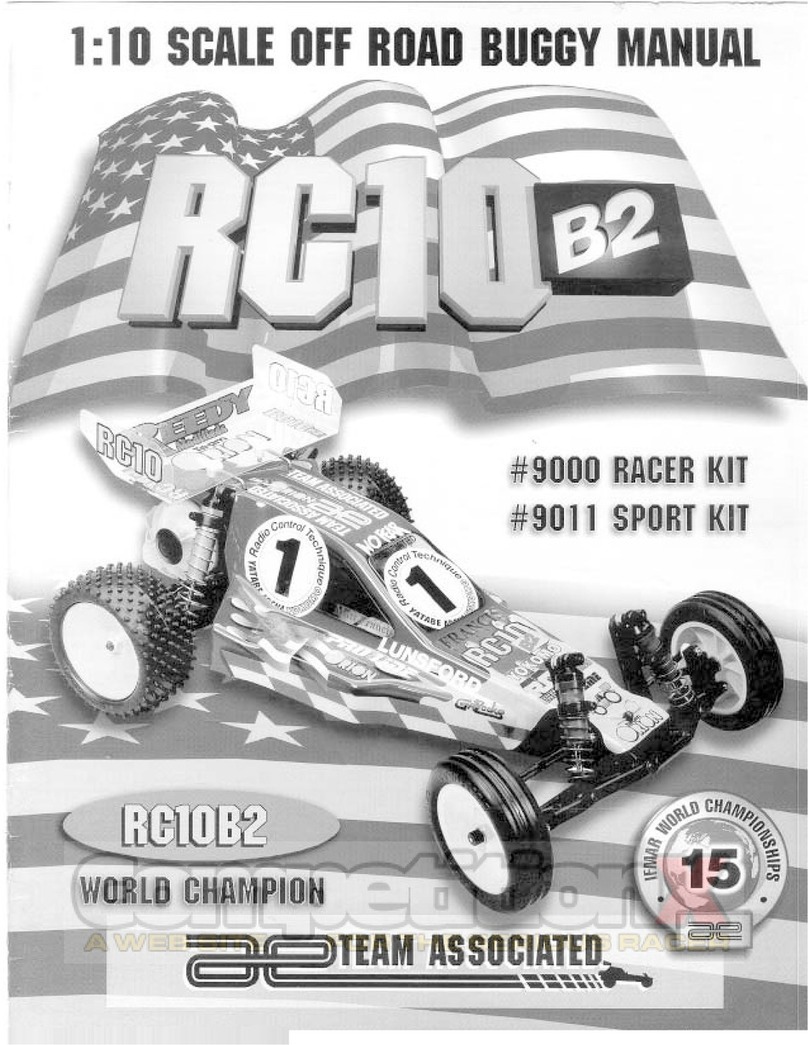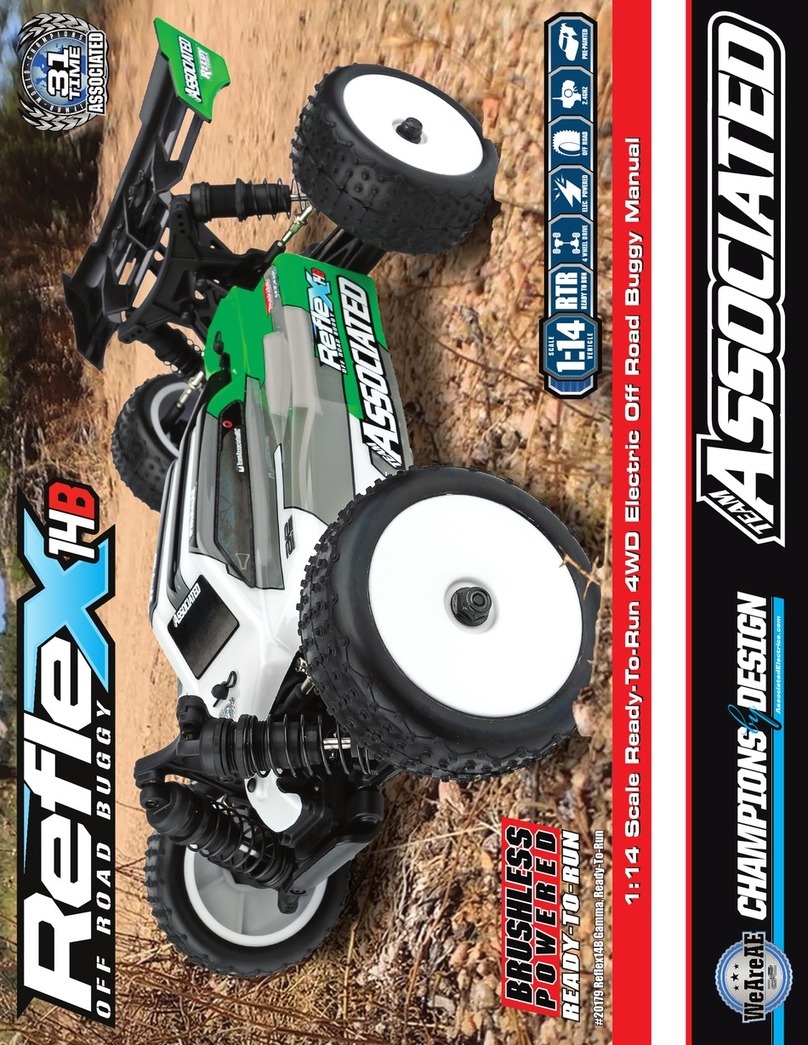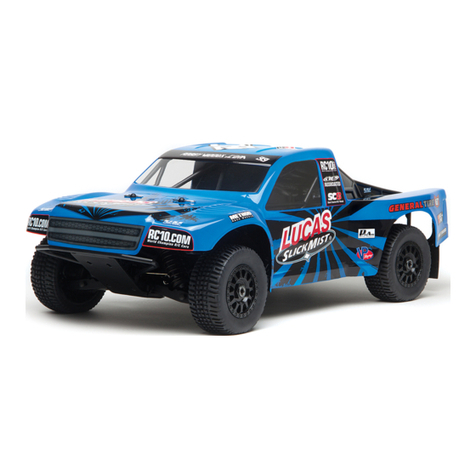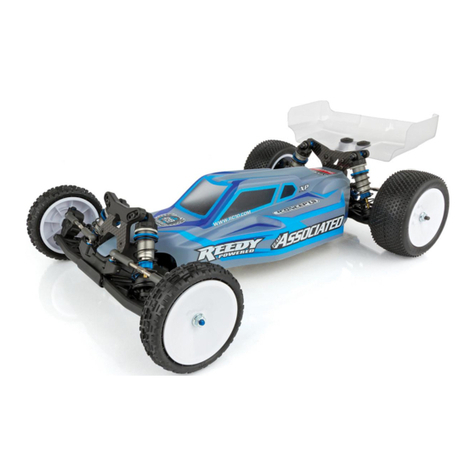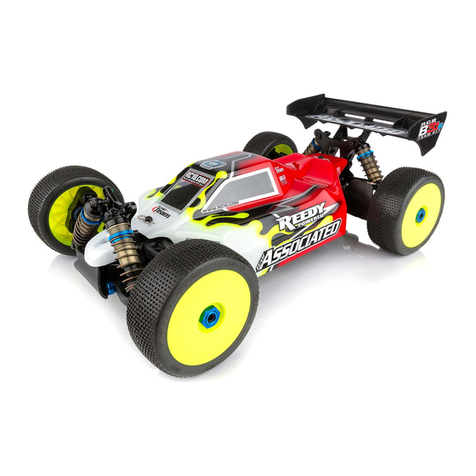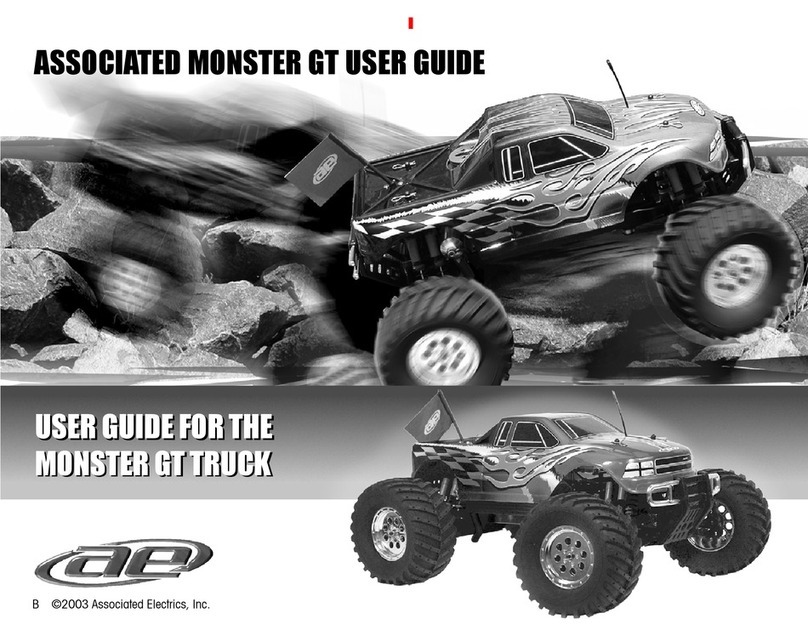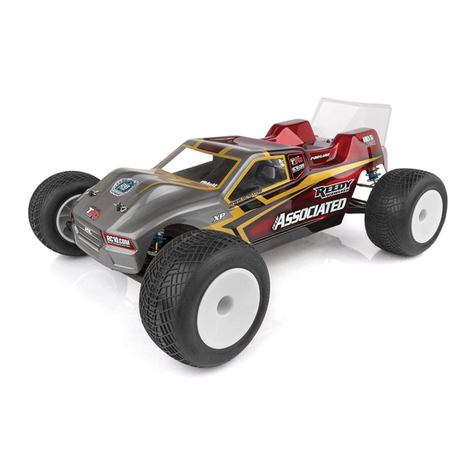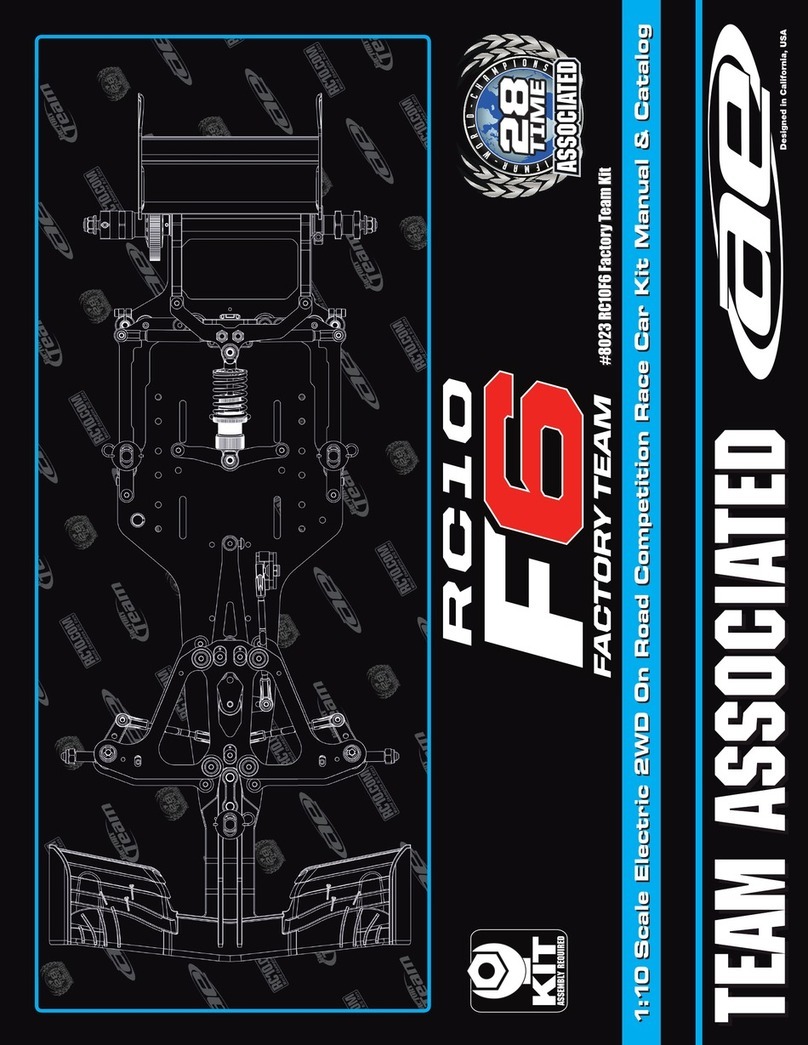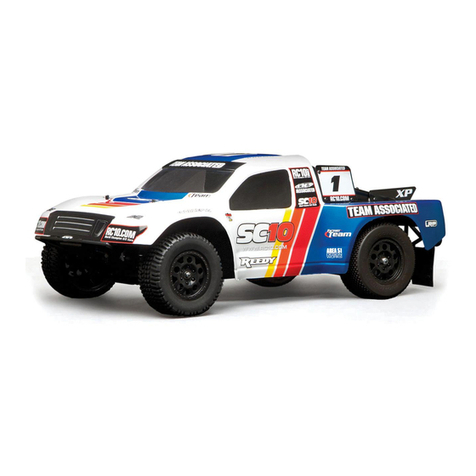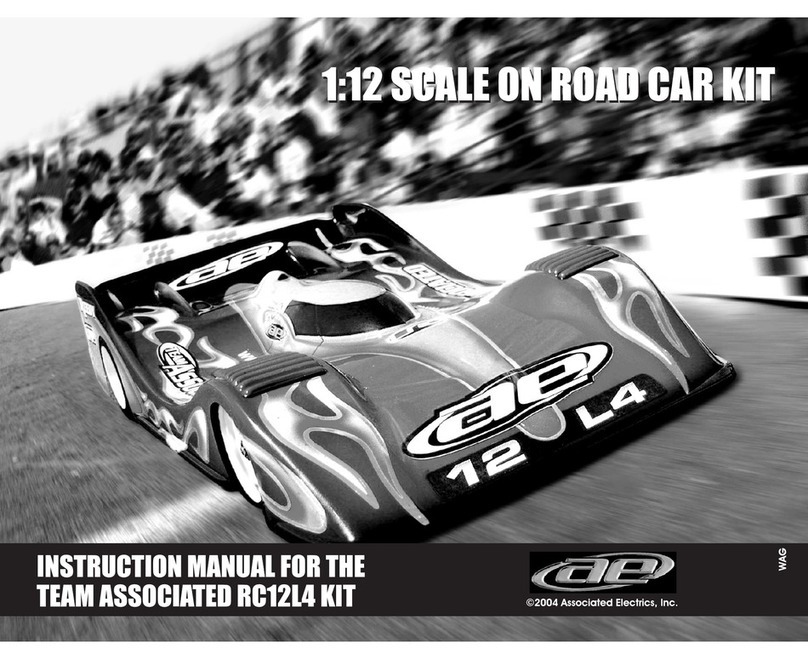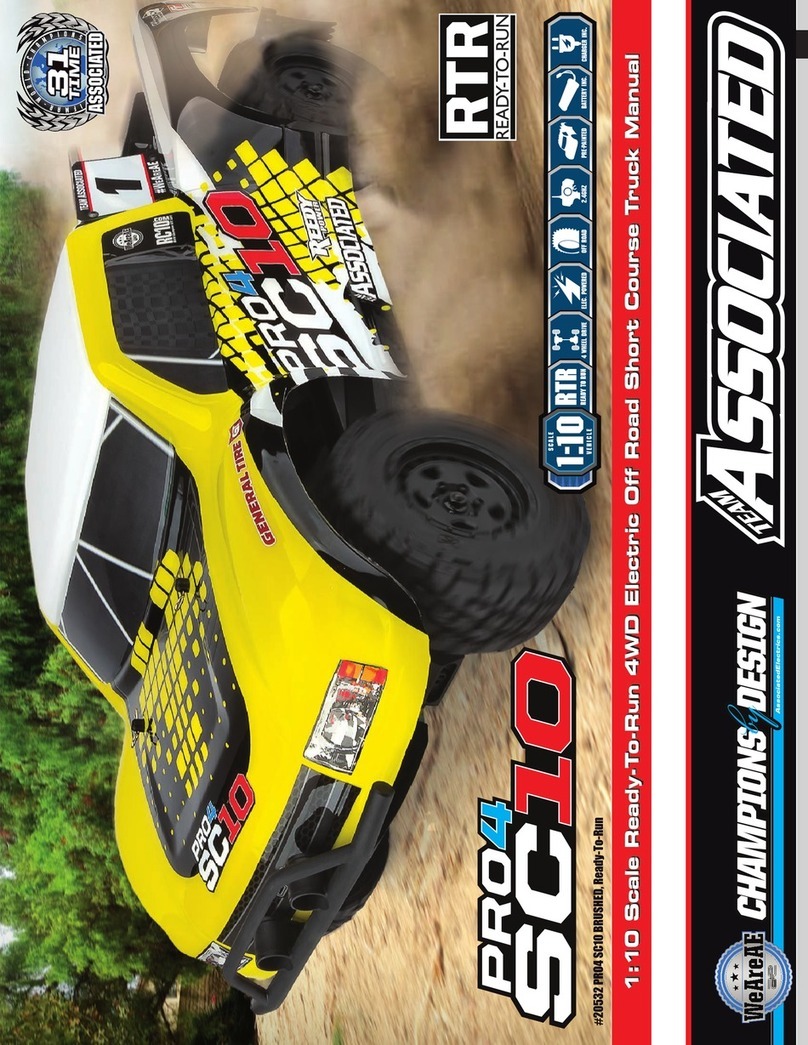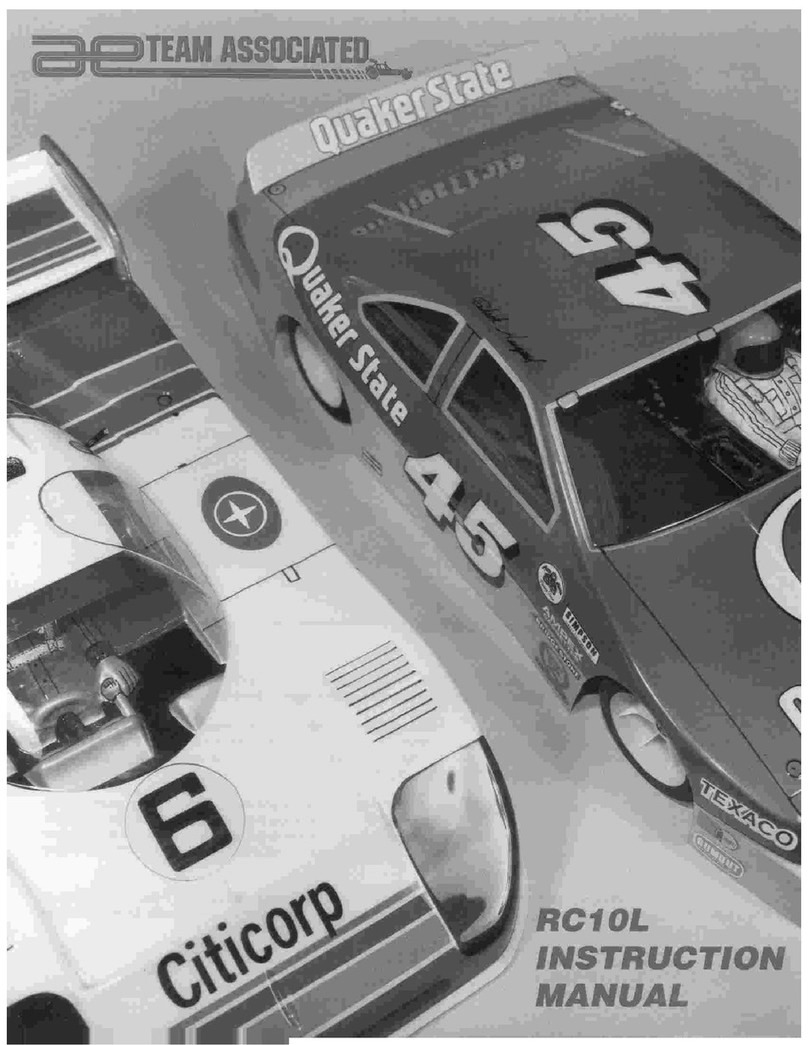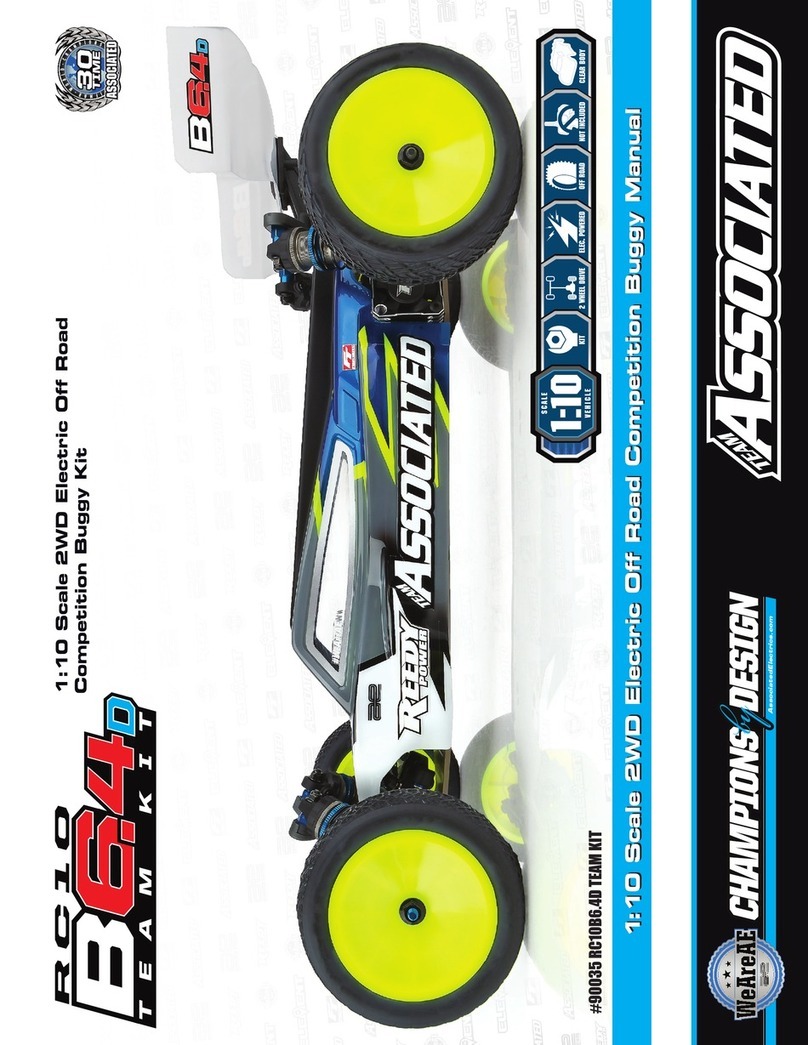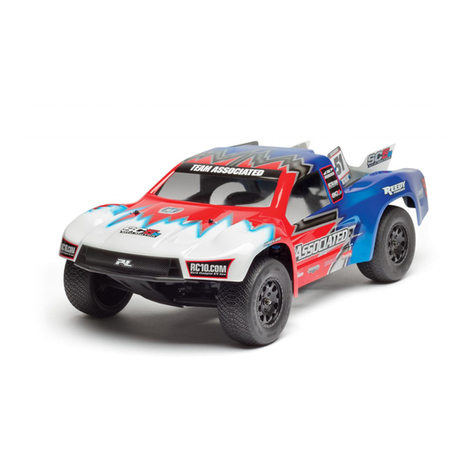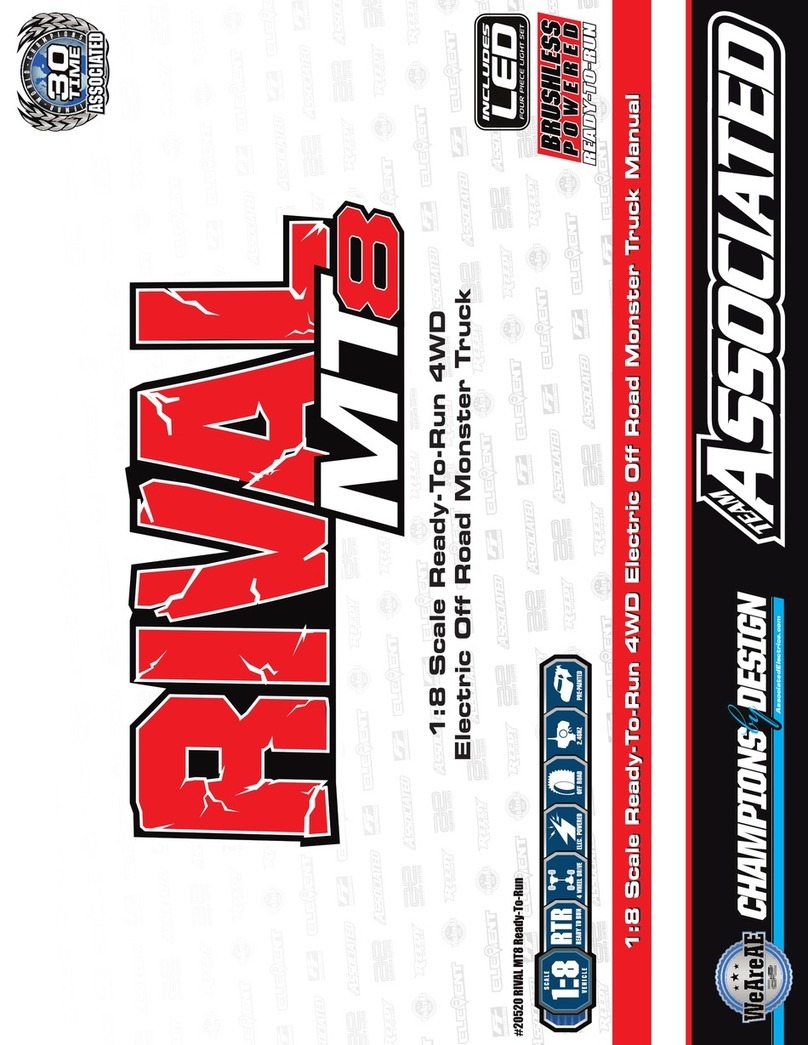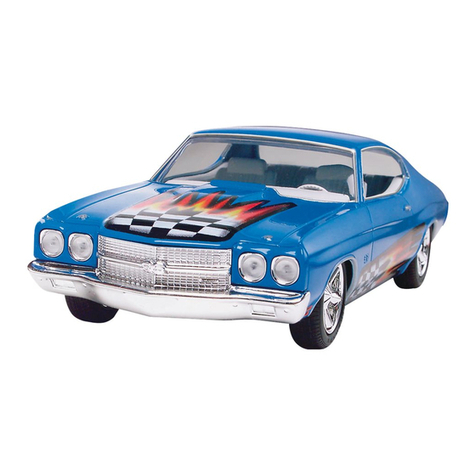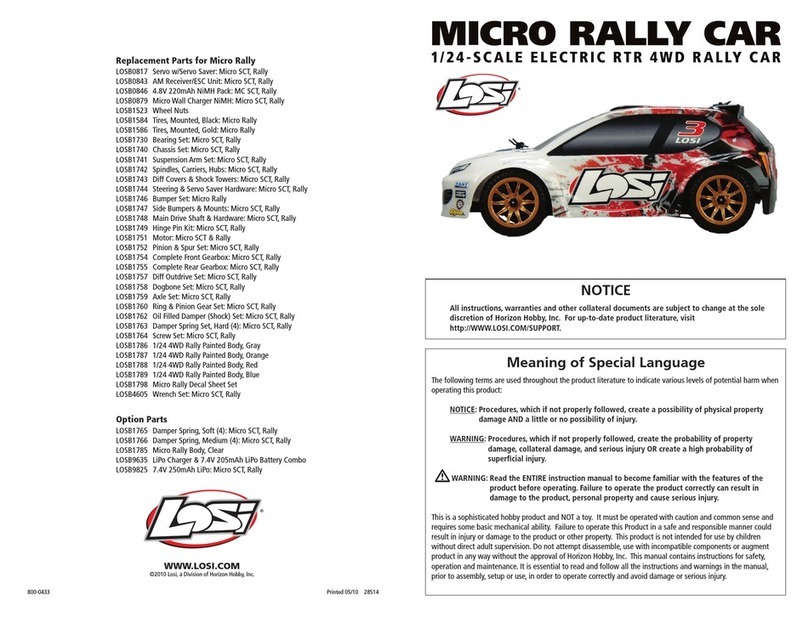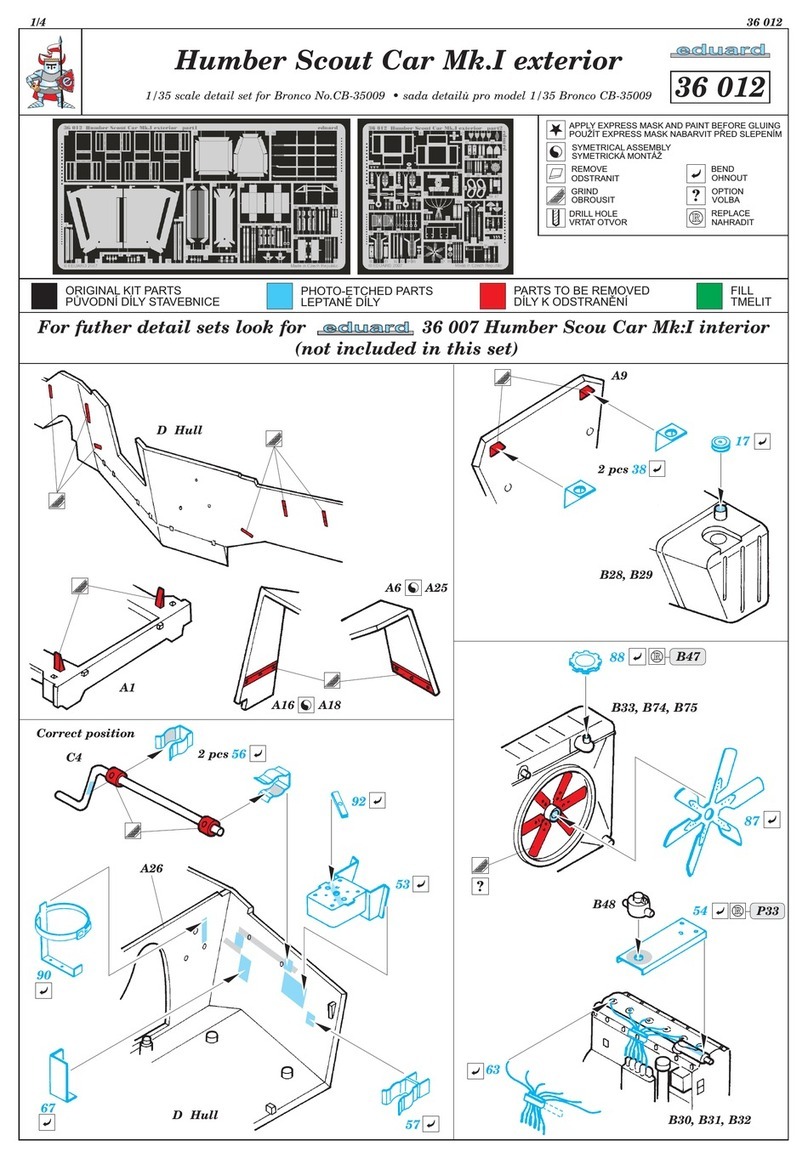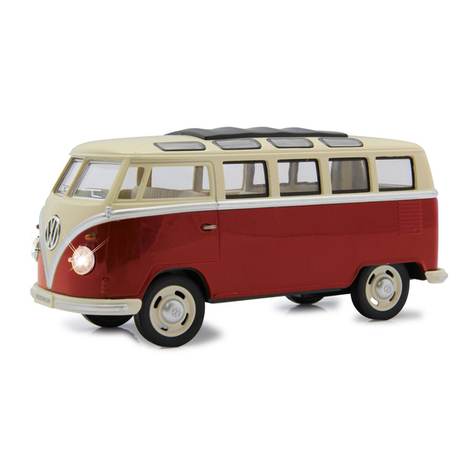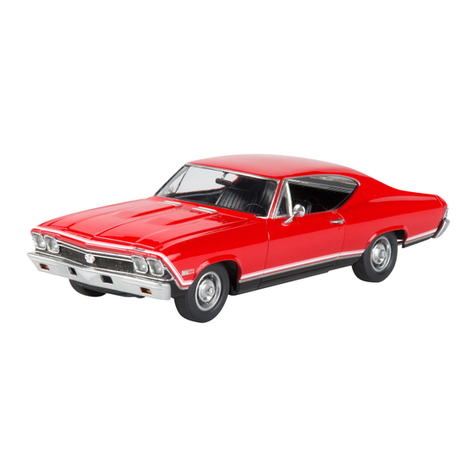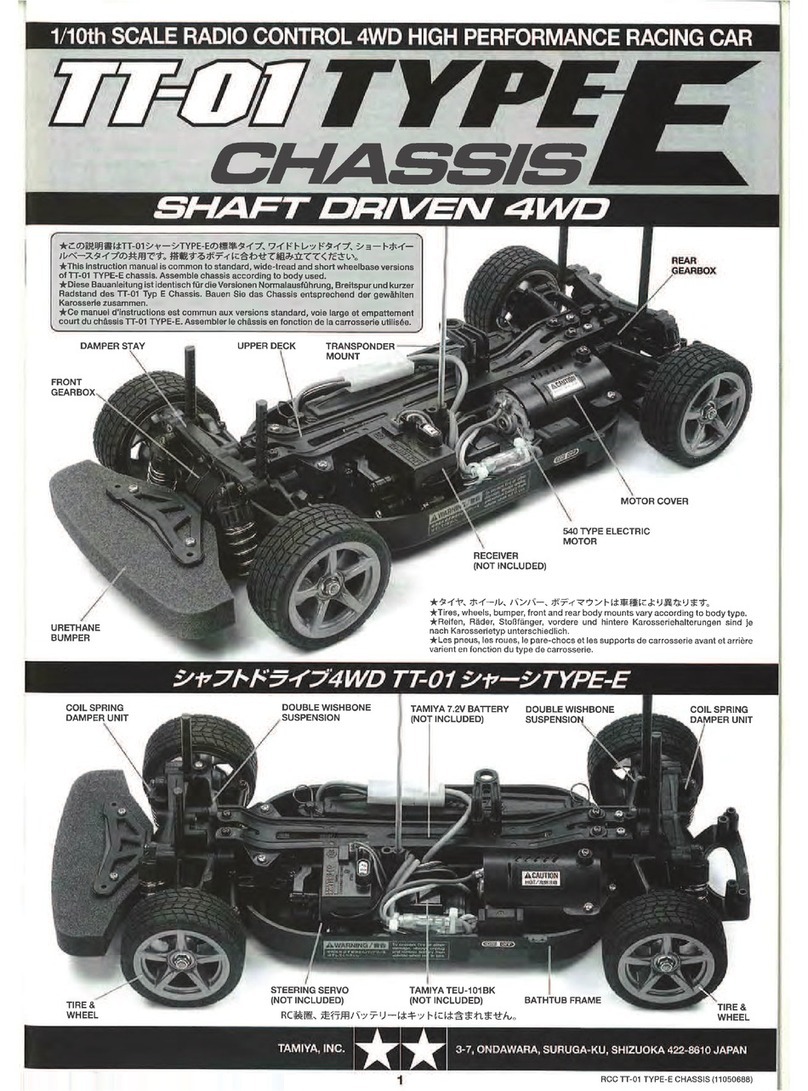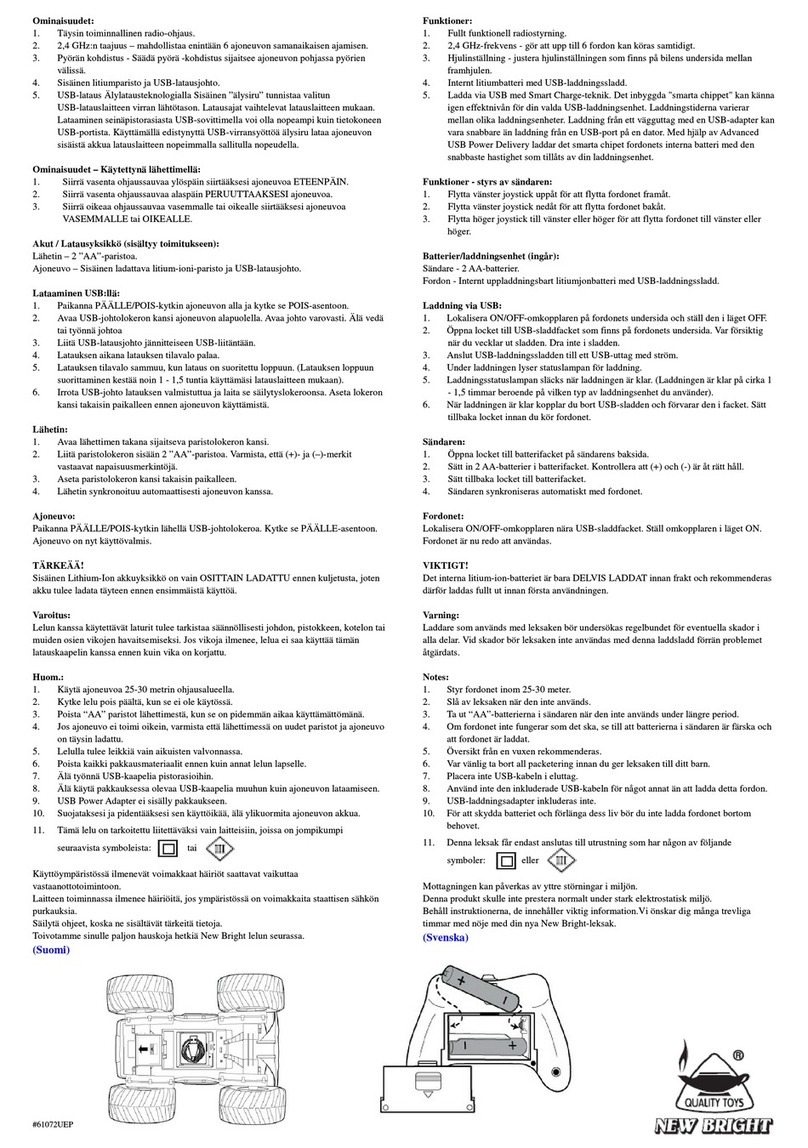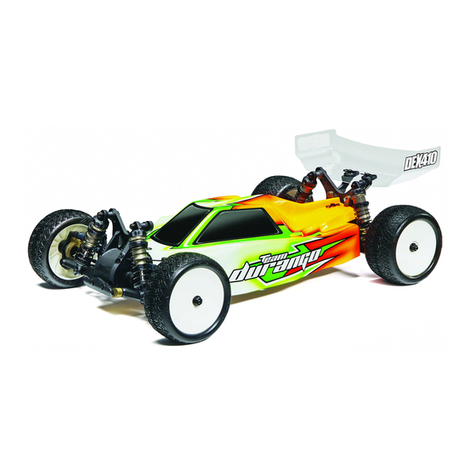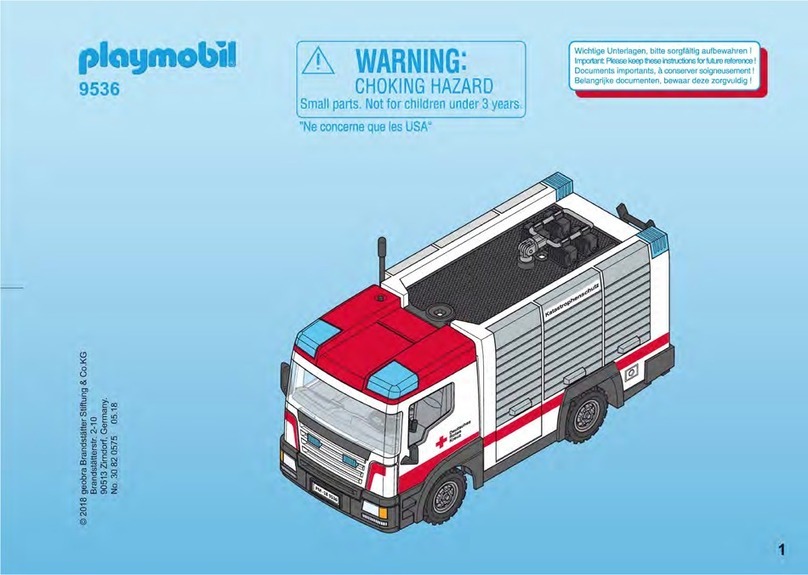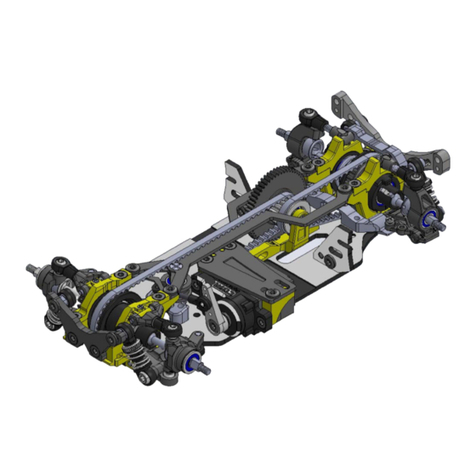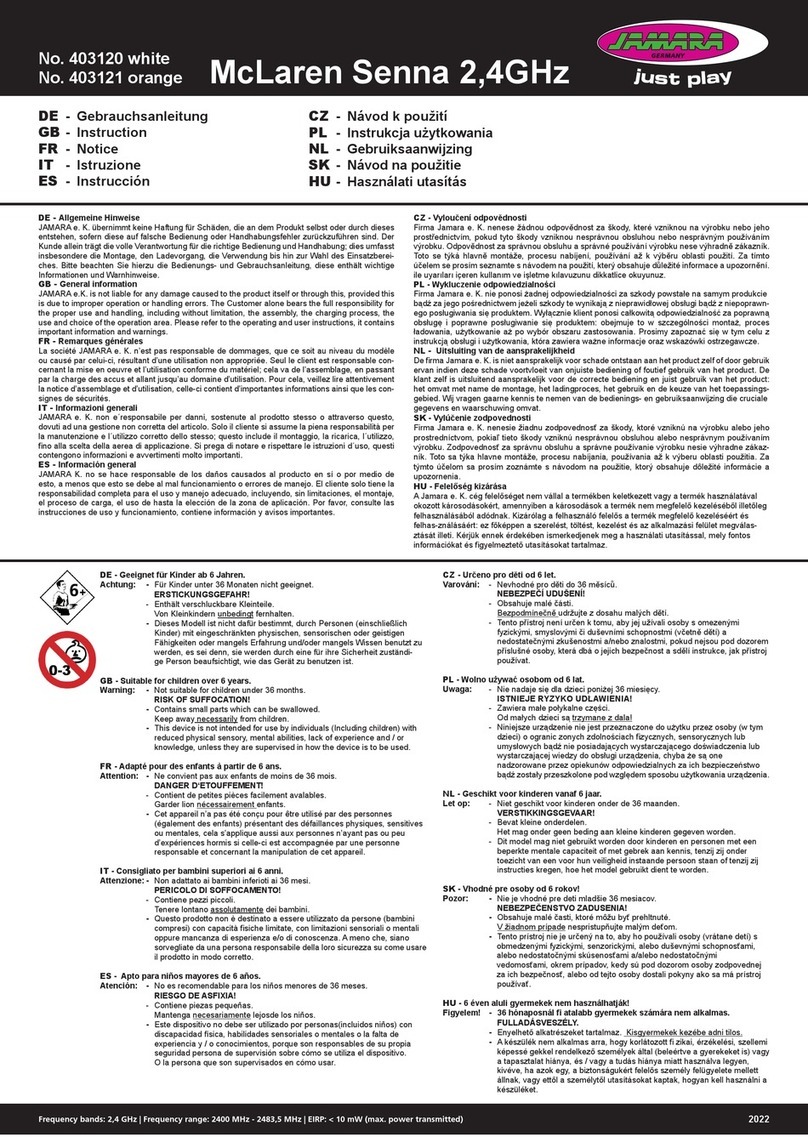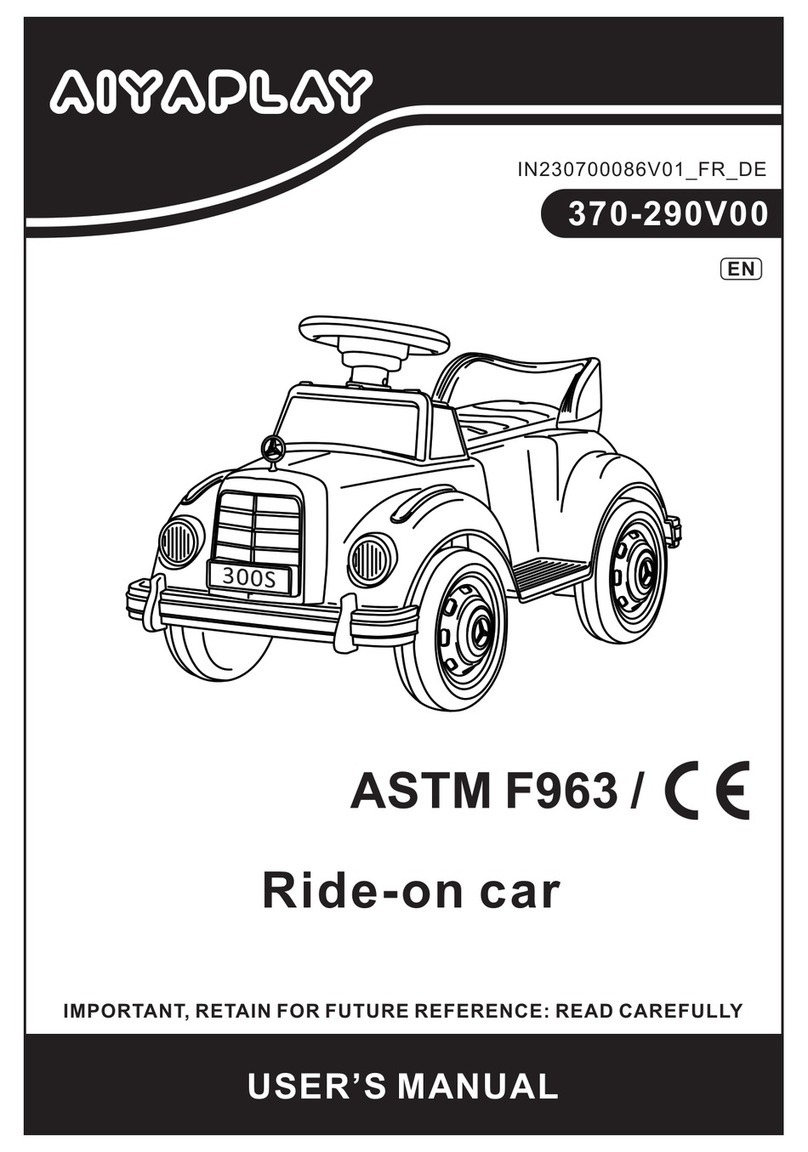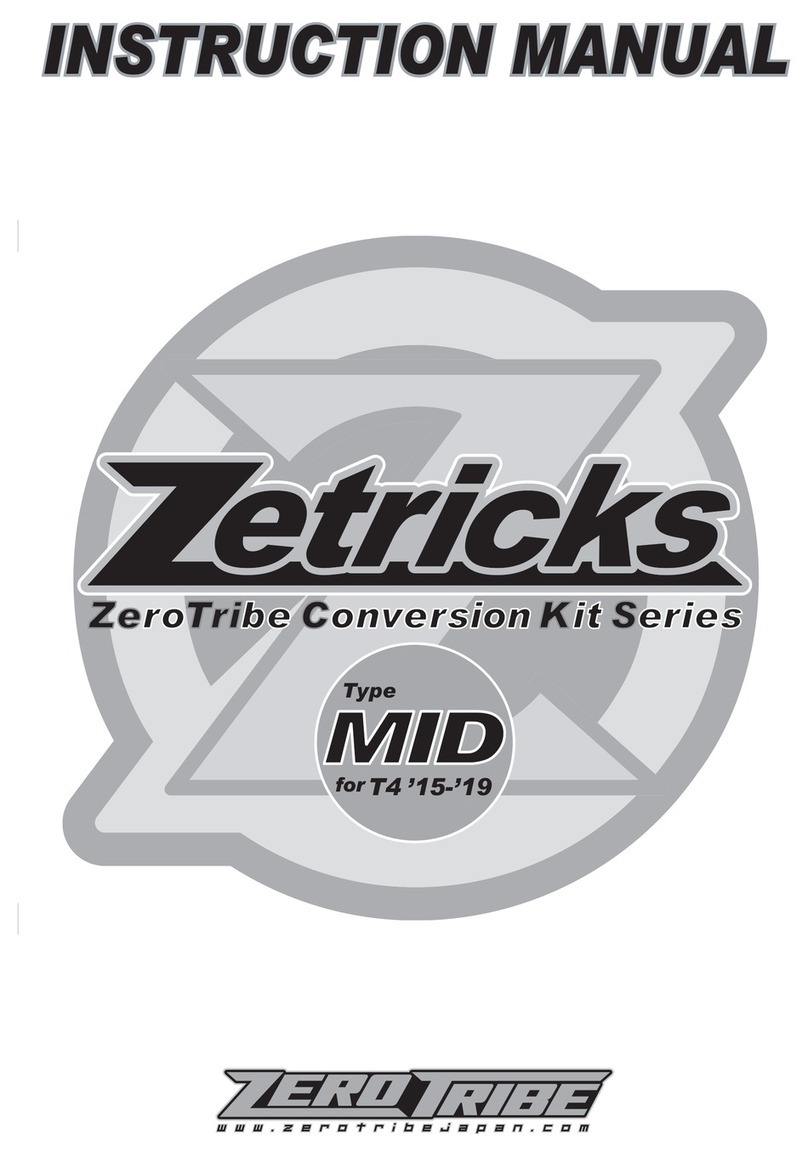
BATTERY CHARGING &
DISCHARGING
The battery packs used for R/C cars are six-
cell, sub-C, rechargeable type found in any hobby
shop.CHARGING.Properbattery charging anddis-
charging is important to maintain the performance
and life of your battery pack.
Associated recommends the use of a good
qualityautomatic peak detectiontypecharger.Peak
detection chargers will automatically sense when
the battery pack is fully charged and shut off, thus
lesseningthe chanceofdamagedue toover charg-
ing.Timer chargersarenot recommended because
a mistake can be made, thus damaging the bat-
tery pack.
DISCHARGING. To maintain performance
from your battery packs, it is recommended you
completelydischargethem betweencharges.There
areseveralinexpensivedischargesavailableat your
hobbyshop.Associated recommendsthe light bulb
type discharger that is popular with the racers.Fol-
low the discharging instructions supplied with your
discharger for best battery performance.
TUNING & SETUP TIPS
MAINTENANCE
FOLLOWTHESE STEPSTO KEEPYOUR CAR IN SHAPE FOR RACING
THESE STEPS PREPAREYOUR CAR FOR MAXIMUM PERFORMANCE
You should periodically check all the moving parts:
front and rear end, suspension arms, steering
blocks, steering linkage, shocks, and so on.If any
of these should get dirty or bind, then your car’s
performance will suffer.
MOTOR MAINTENANCE
Between runs, inspect the brushes to ensure they
are moving freely in the brush holder.This is done
by carefully removing the spring and sliding the
brush in and out of the holder.If there is any resis-
tance or rough spots, remove the brush and care-
fully wipe the brush clean. This will clean off any
buildupandlubricate thebrushsoit slidessmoothly
in the brush holder.
After every 3 to 5 runs, remove the brushes
from the holders and inspect the tips for wear and/
or burning. If there is a noticeable amount of wear,
replace the brush with a new pair. If the tip is a
burnt blue color, then the lubricant in the brush has
been burned away and new brushes should be in-
stalled.
After every other battery charge you should
carefully clean the motor. One recommended
method is to spray motor cleaner directly on the
brush and commutator area.Run the motor for ap-
proximately 15 seconds.Disconnect the motor and
spray it again, making sure the runoff is clear and
clean. If the runoff is still dirty, repeat the spraying
action until clean. After completing the cleaning,
applyasmall amountof lightweightoiltoeach bush-
ing or bearing for lubrication.Be careful not to ap-
ply too much oil, for this will pick up dirt and con-
taminate the commutator and brushes.
brush holders.
2 Try a different motor.
3 Try a different radio frequency.
4 Try mounting the receiver on its side with the
crystal up to get it away from the chassis. Also try
adding more servo tape to the bottom.
5 Try moving the receiver to a different location.
6 Bundle the radio wires well away from the servo
and battery wires.Either can generate a signal into
the antenna wire.
7 Thenewhigh frequency speedcontrols can gen-
erate a signal which can cause interference with
the receiver.Try to keep them an inch apart if pos-
sible.Keep in mind that you can also run into out-
side interference. 75 MHz radio band will tend to
be more susceptible to this problem than the 27
MHz band.
RADIO MAINTENANCE
A radio problem is not always caused by the radio
system. Often it is the result of a combination of
severalfactorswhich can include:motor noise,poor
electrical connections, poor wiring layout, reversed
or defective receiver crystals, weak transmitter
batteries, and so on.If your radio problems persist,
one of the following tips may help:
1 Make sure the motor brushes are free in their
DIFFERENTIAL MAINTENANCE
You should rebuild the differential when the action
getssomewhat“gritty”feeling.Usually cleaning the
diff and applying new lube per the instructions will
bring itback to newcondition.Normally,asthe parts
seat, the diff will get smoother. If, after carefully
cleaningand relubing thediffparts,thediff stillfeels
gritty, the 1/8”balls and drive rings should be
checked and possibly replaced. Refer to the diff
section to correctly assemble the diff.
CLEANINGYOUR CAR
You can cleanyourcarand electronics (radioand
speed control) with an electronics parts cleaner
that is designated safe for plastics.They are con-
venient and work very well, but can be expen-
sive.If you remove your electronics you can also
clean the car and motor with motor cleaning
sprays. Like the electronics cleaners, this works
very well, but can cost a lot. To keep your main-
tenance costs down, you can clean the car (not
the motor or electronics) with normal household
cleaners like 409, Fantastic, Simple Green or
Associated’s #711 Reedy Car Wash.These clean-
ers have more water in them, so to prevent rust on
themetal partsyoumustcompletely dry all ofthese
parts, or else spray them with WD40.
WARNING!
Mostof thesecleaners havechemicalsin themthat
will affect the Lexan body.
(Reedy Car Wash is
Lexan safe.)The bestway to cleanyour Lexan body
is with warm water and a mild dish soap.
Your car is one of the most tunable on road cars on
the market.This section will try to explain the parts
and adjustments you can use to tune your car for
different track conditions.
10°mount,
2°- 0°caster
2 shims forward
10°mount,
4°- 2°caster
1 shim each side
10°mount,
6°- 4°caster
2 shims to rear
16
4 - ) 4
CASTER CHANGE
The 0°mount is level with the chassis when
mounted.The 10°mount is angled 10°in relation
to the chassis or lower suspension arm.This angle
provides a change in caster during suspension
movement.The caster angle will change 2° during
full suspension travel. Your car will steer more
aggressively when using this option.The start-
ing or static caster setting is changed using the
PTFE caster shims.Static caster starts at either
2°, 4°, or 6°. A more detailed example would be a
starting caster of 2°will have 0°caster at full sus-
pension travel and a starting caster of 6°will be
only 4°at full suspension travel.
